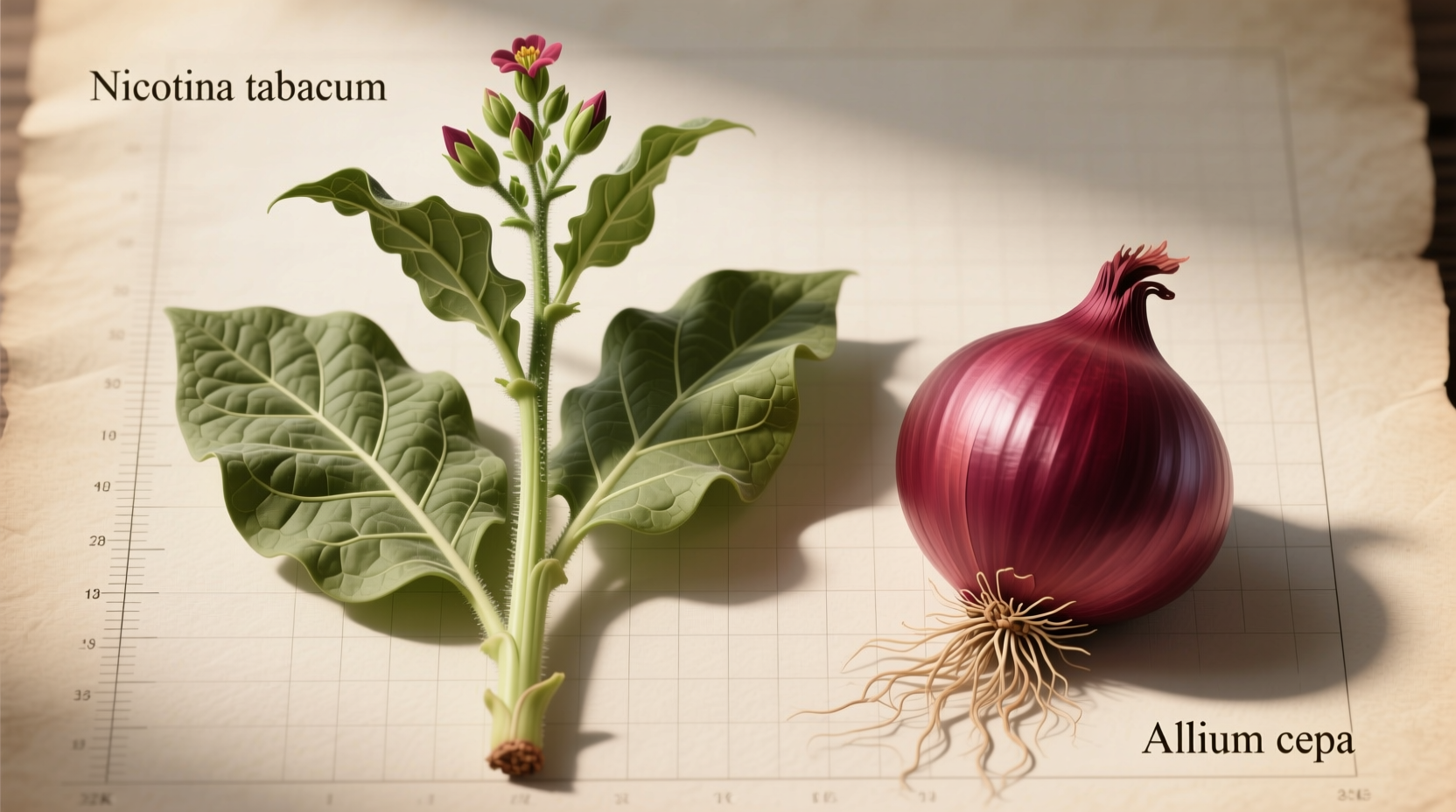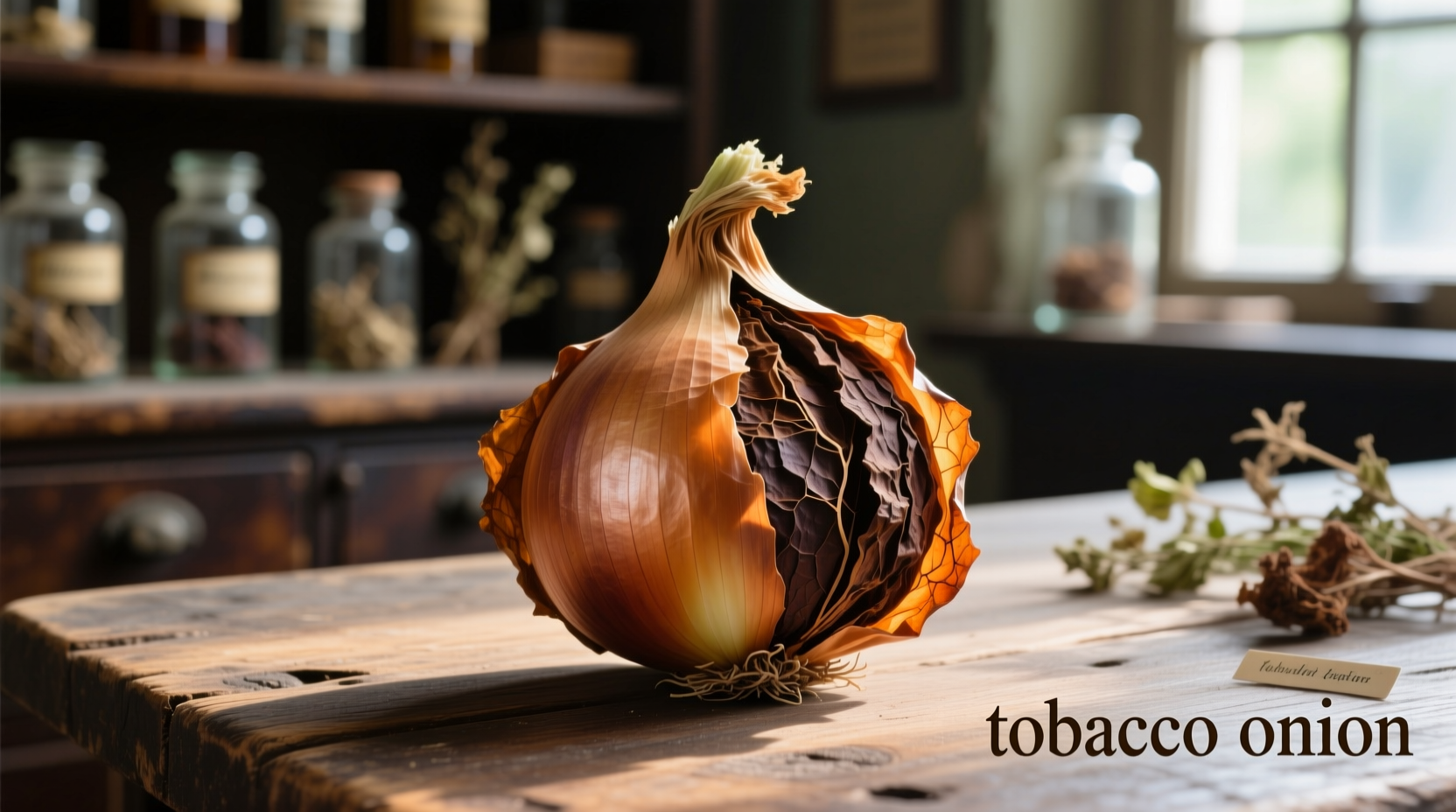Tobacco onion isn't a recognized plant species or standard culinary term. The search likely refers to folk remedy practices combining tobacco and onions for medicinal purposes, which carry significant health risks. Medical professionals strongly advise against using tobacco for any health treatment due to its well-documented carcinogenic properties and addictive nature. Onions offer nutritional benefits, but pairing them with tobacco creates dangerous health hazards rather than therapeutic value.
When searching for "tobacco onion," many people encounter references to traditional home remedies that combine these two ingredients for treating ailments like earaches, toothaches, or respiratory issues. This article clarifies what these practices entail, examines their safety profile based on current medical understanding, and provides evidence-based alternatives for common health concerns.
Understanding the "Tobacco Onion" Misconception
The term "tobacco onion" creates confusion because it suggests a single plant or product that doesn't exist in botanical science. Tobacco (Nicotiana tabacum) and onions (Allium cepa) belong to completely different plant families with distinct chemical properties. Historical records show that some traditional medicine systems have recommended applying mixtures of raw onion and tobacco juice to affected areas, but modern medicine categorically rejects these practices due to tobacco's toxicity.
| Component | Scientific Classification | Primary Chemical Properties | Medical Assessment |
|---|---|---|---|
| Tobacco | Solanaceae family (Nightshade) |
Nicotine, carcinogens, tar, carbon monoxide |
Class 1 carcinogen (IARC) No safe medicinal use |
| Onion | Amaryllidaceae family | Quercetin, allicin, vitamin C, fiber |
Generally recognized as safe with nutritional benefits |
Why Tobacco Poses Serious Health Risks
The Centers for Disease Control and Prevention (CDC) states that tobacco use remains the leading preventable cause of disease, disability, and death in the United States. Their research confirms that smoking causes more than 16 types of cancer and numerous other health conditions. When applied topically as some folk remedies suggest, tobacco's nicotine and other toxins can still be absorbed through the skin or mucous membranes, potentially causing poisoning—especially in children.
Dr. Brian King, Director of the CDC's Office on Smoking and Health, emphasizes: "There is no safe level of tobacco exposure. Even when not smoked, tobacco products contain harmful chemicals that can cause nicotine poisoning, particularly when applied directly to skin or mucous membranes."

Documented Timeline of Tobacco Regulation
Understanding tobacco's dangerous properties requires examining how scientific consensus developed over time:
| Year | Milestone | Significance |
|---|---|---|
| 1964 | U.S. Surgeon General's report | First official recognition of smoking's health risks |
| 1986 | EPA classifies secondhand smoke as carcinogen | Expanded understanding of tobacco's dangers |
| 2009 | FDA gains authority over tobacco products | Formal recognition of tobacco as harmful substance |
| 2022 | NIH confirms no safe topical tobacco use | Definitive rejection of folk remedy applications |
Onion's Actual Health Properties
Unlike tobacco, onions contain beneficial compounds with documented health properties. According to USDA nutritional data, one medium onion provides:
- Approximately 44 calories
- 11% of daily vitamin C needs
- Significant quercetin and other antioxidants
- Dietary fiber supporting digestive health
Research published in the Journal of Agricultural and Food Chemistry confirms that onions contain compounds with anti-inflammatory properties. However, these benefits come from culinary consumption—not from combining onions with toxic substances like tobacco.
Dangerous Folk Remedies Involving Tobacco and Onion
Despite lacking scientific support, some traditional practices persist:
- Earache treatment: Placing tobacco leaf wrapped around onion directly in the ear canal
- Toothache remedy: Applying tobacco juice mixed with onion paste to affected tooth
- Cold treatment: Inhaling vapors from heated tobacco and onion mixture
The American Academy of Pediatrics specifically warns against tobacco-based ear treatments, noting cases of nicotine poisoning in children from such practices. Their research documents multiple hospitalizations from topical tobacco applications in traditional remedies.
Safe Alternatives for Common Ailments
For those seeking natural relief for conditions sometimes addressed by dangerous tobacco-onion mixtures, evidence-based alternatives exist:
For ear discomfort:
- Warm (not hot) compress applied externally
- Over-the-counter pain relief medications
- Consultation with healthcare provider for persistent issues
For tooth sensitivity:
- Fluoride toothpaste for sensitive teeth
- Temporary dental filling kits for emergencies
- Dental consultation for underlying causes
For respiratory symptoms:
- Honey-based cough remedies (for adults)
- Saline nasal irrigation
- Proper hydration and rest
The National Institutes of Health emphasizes that no tobacco product should be used for medicinal purposes, regardless of preparation method or combination with other ingredients.
When to Consult a Healthcare Professional
Certain symptoms require immediate medical attention rather than home remedies:
- Ear pain lasting more than 24 hours
- Severe tooth pain disrupting sleep or eating
- Difficulty breathing or swallowing
- Signs of infection (fever, swelling, pus)
Medical professionals can provide appropriate treatments based on diagnosis rather than symptom management alone. For persistent minor ailments, they can recommend evidence-based approaches without the risks associated with tobacco exposure.
Conclusion: Prioritizing Evidence-Based Health Practices
While historical records document various tobacco-onion folk remedies, modern medical science unequivocally rejects these practices due to tobacco's well-documented toxicity. Onions offer nutritional benefits when consumed as food, but combining them with tobacco creates unnecessary health risks without therapeutic value. For any health concern, consulting qualified healthcare providers ensures safe, effective treatment based on current medical knowledge rather than potentially dangerous traditional practices.
Written by Sarah Johnson











 浙公网安备
33010002000092号
浙公网安备
33010002000092号 浙B2-20120091-4
浙B2-20120091-4